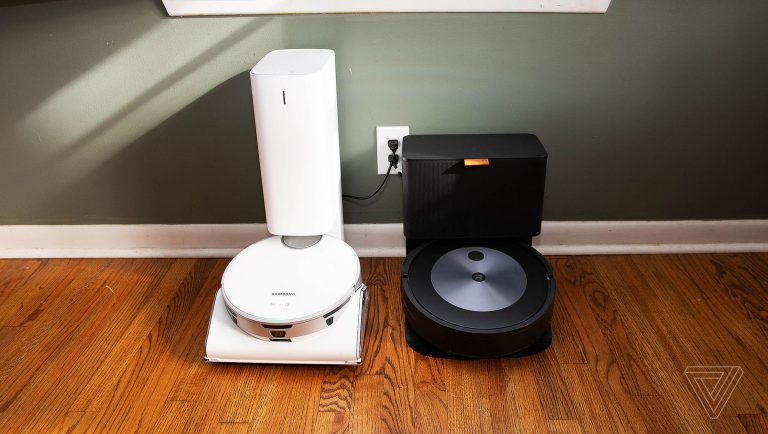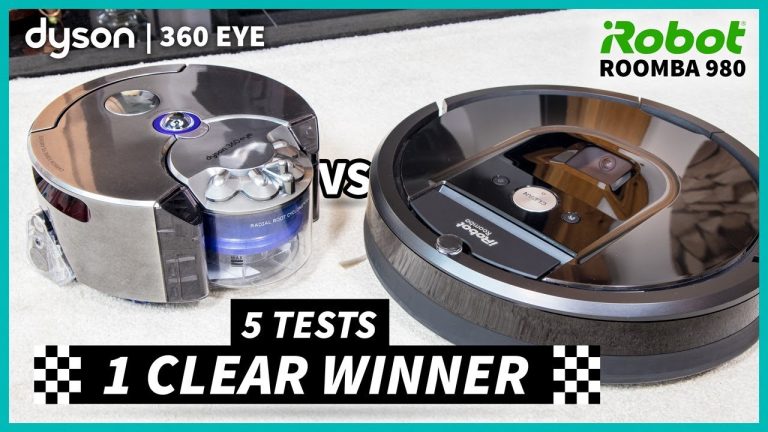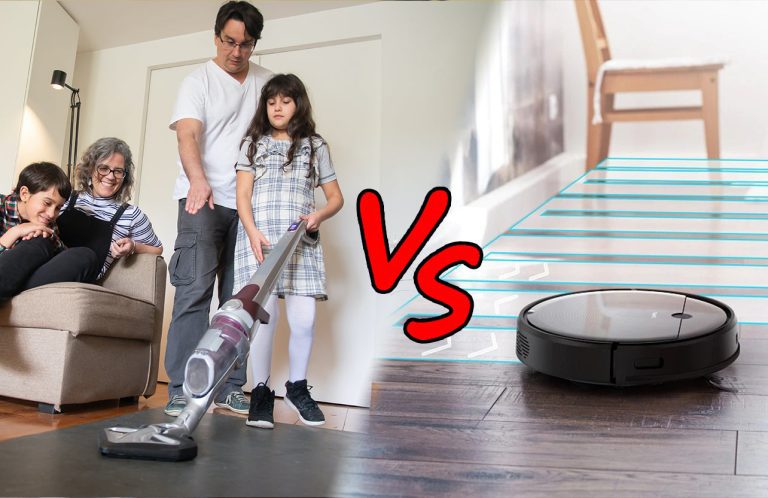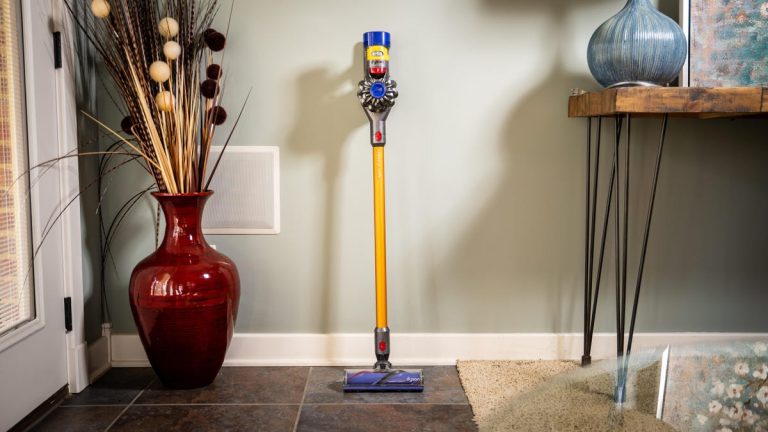Robot Vacuum Vs Regular

Robot vacuum cleaners offer automated, hands-free cleaning, while regular vacuums require manual operation. Robot vacuums excel in maintenance cleaning; regular vacuums provide more powerful suction.
Home cleaning has advanced with technology, particularly with the advent of robot vacuums that have changed the landscape of household chores. These nifty devices glide across your floors, dodging furniture and tackling dust bunnies, all without a finger lifted. Contrastingly, traditional vacuums rely on your guidance to navigate every nook and cranny, often delivering a deeper clean due to stronger suction and manual control.
As consumers value both convenience and efficiency in maintaining a clean home, the choice between a robot vacuum and a regular one depends on individual cleaning needs, lifestyle, and the level of cleanliness desired. With each type offering distinctive benefits, it comes down to whether you prioritize the set-it-and-forget-it approach of a robot vacuum or the thoroughness and control of a regular vacuum.
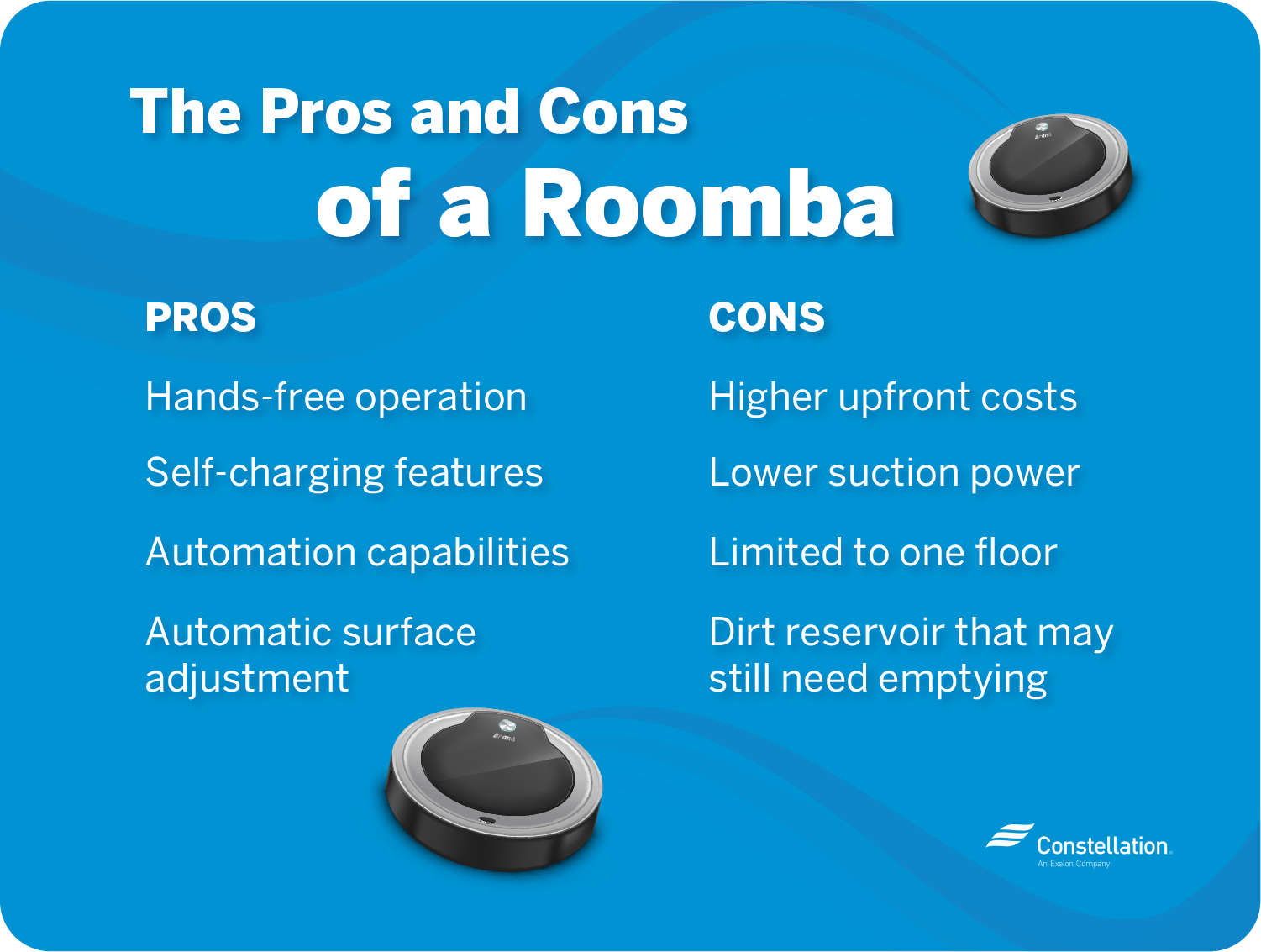
Credit: blog.constellation.com
Introduction To Home Vacuuming Solutions
Vacuum cleaners have transformed over time. Robot vacuums and regular vacuums stand out today. Robot vacuums are automated and map your house for efficient cleaning. They fit into busy lifestyles well. Regular vacuums need a human touch but offer more control and force.
For clean freaks or those short on time, robot vacuums seem like a marvel. Just press a button, and your floors get clean without effort. With regular vacuums, you get the satisfaction of instant results. Yet, it eats up your time and energy. Both types aim to keep spaces sparkling clean with varying degrees of human input.
Comparing Robot Vacuum And Regular Vacuum
Robot vacuums are compact and often disk-shaped, perfect for sliding under furniture. Their sleek designs enhance modern aesthetics. Regular vacuums tend to be bulkier, requiring more storage space. Yet, they offer diverse styles, from upright to canister models tailored to varied needs.
Considering effectiveness, robot vacuums score high for regular, light cleanings. Regular vacuums often provide more powerful suction and specialized attachments. These features tackle a broad range of messes, making them ideal for deep-cleaning tasks.
User interaction differs significantly. Robot models boast smart features, controlled by apps or voice. They can clean autonomously. Traditional vacuums need manual operation but grant users the immediate control to focus on specific areas.
Maintenance for robot vacuums generally requires regular emptying of smaller dustbins. Regular vacuums typically have larger capacity and can go longer between maintenance. Durability may vary, with some users finding that regular vacuums outlast robots.
Advantages And Limitations Of Robot Vacuums
Robot vacuums shine with their ability to clean without help. Their smart features let them learn your house’s layout. They can clean by scheduling or through voice commands. Sensors help them avoid falls and obstacles.
These devices use advanced mapping technologies to navigate space. They remember where they have cleaned. Some can even mark no-go zones on their digital maps. This tech keeps them efficient.
Battery life varies across models. Most can return to their docks to recharge. Charging can take a few hours. After charging, they resume cleaning where they left off.
Despite their ease, robot vacuums aren’t perfect. On carpets or heavy dirt, their suction may struggle. Different surfaces can affect their performance. They do best on hard floors and light carpets.

Credit: www.getonedesk.com
Advantages And Limitations Of Regular Vacuums
Regular vacuums offer precise cleaning through manual control. They work well on many floor types. With various attachments, they adapt to different cleaning tasks. Regular care ensures longevity for these machines.
Durability is a strength, requiring simple maintenance like filter changes. Initial costs are lower than robotic counterparts. This makes them a budget-friendly choice for many users.
Considerations For Choosing The Right Vacuum
Evaluating the needs of your home is crucial before purchasing a vacuum. Consider the size and layout of your space. Large homes may require a vacuum with more power or extended battery life.
Families with complex layouts might benefit from a robot vacuum’s smart navigation. Budget constraints play a vital role in the decision. Initial costs for robot vacuums tend to be higher, yet they offer long-term savings through energy efficiency and durability.
Those with allergies should prioritize vacuums with advanced filtration systems. This ensures finer particles, like dust and pollen, are effectively captured. This is important for cleaner air in your household.
The Impact Of Technological Advancements
The smart home revolution is changing how we clean. Robot vacuums sync with IoT devices for easy control. As energy-efficient tech improves, homes become greener. Reliance on smart, automated cleaning is rising fast.
Looking ahead, robotic vacuums gain advanced features. Sensors and AI enable them to tackle complex tasks. They’ll become even more integrated with home systems. These devices consistently work towards reducing energy use and supporting a sustainable lifestyle.
Making An Informed Decision
Choosing between a robot vacuum and a regular vacuum demands thoughtful consideration. Users must reflect on several aspects, such as cost, effectiveness, and convenience. Robot vacuums offer automated cleaning and can save valuable time. Yet, they might struggle with complex layouts. Traditional vacuums excel in power and control for tough messes or specific areas.
Your lifestyle plays a key role as well. Homes with pets might benefit from a regular vacuum’s stronger suction. Busy individuals or those with mobility issues might find that a robot vacuum fits seamlessly into their routines.
The market today shows a clear lean towards smart home devices. This trend is seen in the rising popularity of autonomous vacuums. Consumers are embracing the convenience and technological advancements of robot vacuums. Nevertheless, some still prefer the control and immediate power of handheld or upright vacuums.

Credit: www.choice.com.au
Frequently Asked Questions Of Robot Vacuum Vs Regular
Are Robot Vacuums As Good As Regular?
Robot vacuums offer convenience and can maintain daily cleanliness, but may lack the deep cleaning power of regular vacuums. They’re great for ongoing upkeep but might not replace the thoroughness of manual cleaning sessions for tougher messes.
What Is The Disadvantage Of Robot Vacuum?
Robot vacuums can struggle with complex layouts, may get stuck on obstacles, and often have limited debris capacity. They require regular maintenance and may miss spots during cleaning.
Can A Robot Vacuum Replace A Regular Vacuum?
A robot vacuum can complement but not fully replace a regular vacuum, as it may miss larger debris and deep-cleaning tasks.
What Is The Difference Between A Vacuum Cleaner And A Robot Vacuum?
A vacuum cleaner is manually operated for cleaning, while a robot vacuum automates the process with smart navigation and scheduling features.
Conclusion
Deciding between a robot vacuum and a traditional one boils down to lifestyle and preferences. Both offer unique advantages for keeping homes clean. Robot vacuums provide convenience and time-saving benefits, while regular vacuums offer control and deep-cleaning power. Carefully consider your needs to make the perfect choice for a tidy living space.
